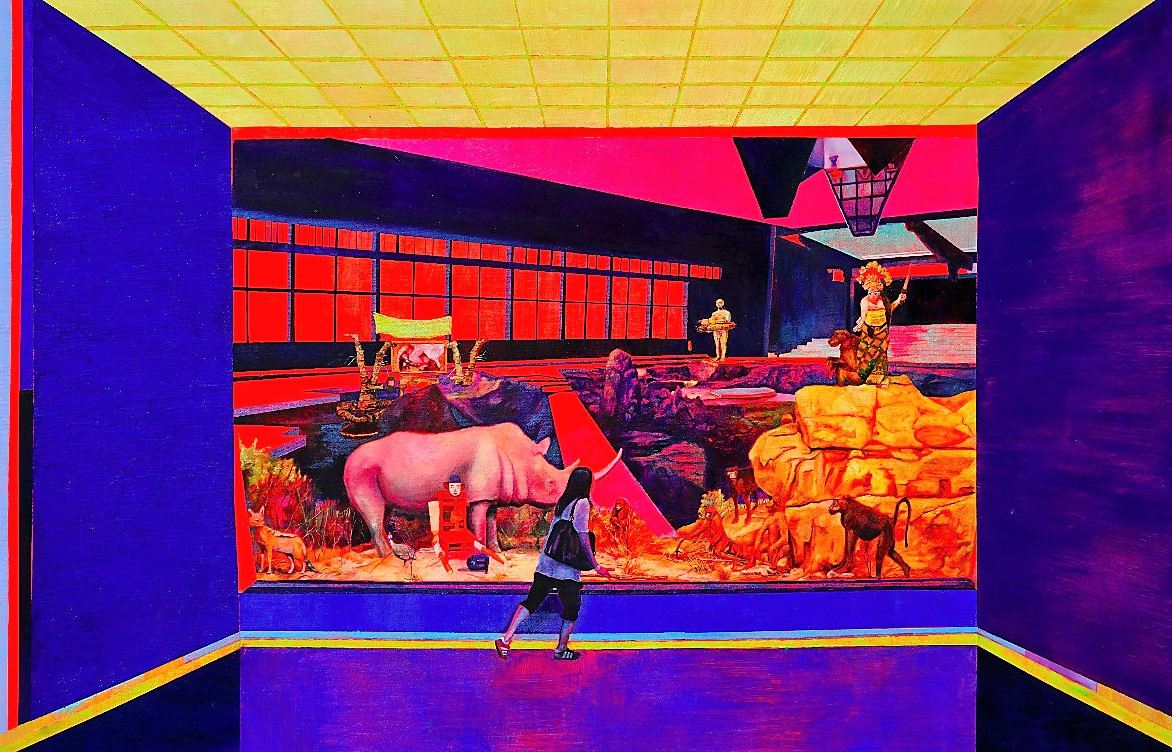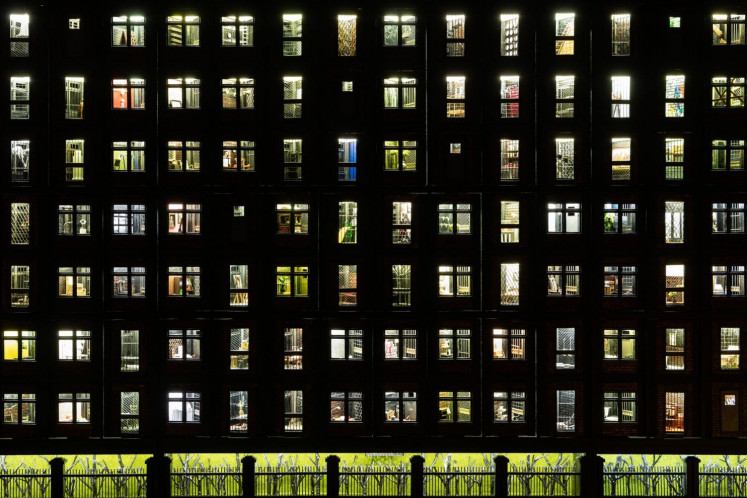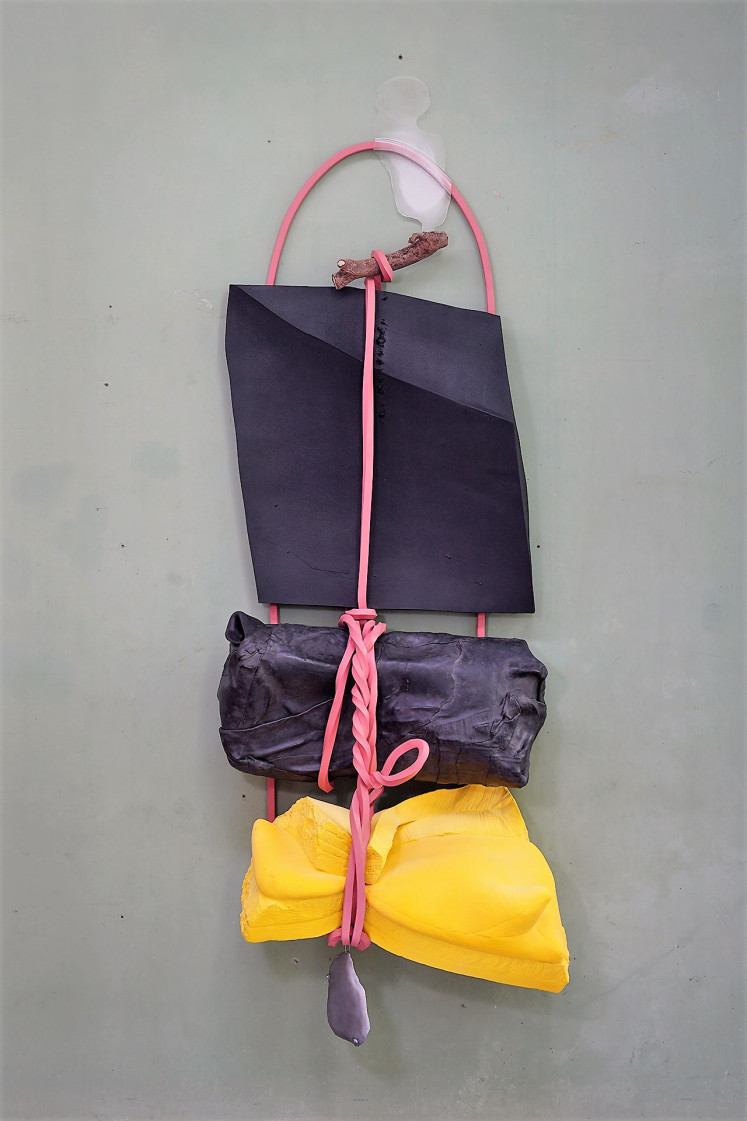Popular Reads
Top Results
Can't find what you're looking for?
View all search resultsPopular Reads
Top Results
Can't find what you're looking for?
View all search resultsFrom art history to housing problems: Indonesia matters at Brisbane’s APT9
Four Indonesian artists have been selected by a group of curators to showcase their works at the 9th Asia Pacific Triennial of Contemporary Art (APT9) that puts Indonesia as one of the highlights.
Change text size
Gift Premium Articles
to Anyone
A group of Indonesian journalists, including The Jakarta Post, were recently invited by the Australian government to make a one-week visit to Sydney and Brisbane to take a closer look on how multiculturalism works in the neighboring country. The following is the report.
A lot of things have taken place in Indonesia since the first Asia Pacific Triennial (APT) was held in Brisbane, Queensland, Australia more than 25 years ago.
During that period, the nation saw the end of an autocratic government, a gradual transition to democracy, a property boom and a revival of sectarian politics.
It is no surprise that the Muslim majority country -- Australia’s giant neighbor in the north – has become one of the highlights of the 9th Asia Pacific Triennial of Contemporary Art (APT9) that runs until April 28.
Four Indonesian artists -- Zico Albaiquni, Aditya Novali, Elia Nurvista and Hardiman Saputra -- have been selected by a group of APT9 curators to showcase their works at the exhibit, which features 80 artists from more than 30 countries.
With their inventive works, the four artists have provided the cultural mosaic of Asia Pacific at APT9 with fragments of Indonesian narratives.
It is hard to overlook Zico’s works. His paintings, which feature bright pallets, are the first to see on the third floor of Brisbane’s Gallery of Modern Art (GOMA). One of them was even chosen as the cover of the exhibit’s catalog.
Most Indonesian visitors may find his painting, Negotiation of Understanding, familiar and alien at the same time -- it shows a woman (Zico’s wife) taking a picture of a mooi indie painting at a gallery.
APT9 curator Tarun Nagesh said the Bandung-based artist is trying to paint the history of Indonesian art into his works, embedding motifs of seminal artists from Raden Saleh and Sindudarsono Sudjojono to the “pioneering figures of the contemporary movement” such as FX Harsono and Heri Dono.
“In his artworks, he brings together lots of different references to Indonesian art history and world art history and draws on his personal story as well and thinks about himself and paints his studios into his paintings as well,” Nagesh told a group of Indonesian journalists during a visit to the GOMA.
The visit was arranged by the Australian Embassy.
“We chose him for the cover because I think his work is very bold and new and different. It uses not only great colors and techniques, but also lots of very, very interesting references […] we're really excited to include him alongside a wealth of other artists who are all included in the catalog,” he added.
While delving into Indonesian art history, Zico’s works are not devoid of the current sociopolitical events that have shaped Indonesia today. That is why you could find in one of his paintings an image of firebrand cleric Rizieq Shihab and other Muslim leaders taking part in the 212 Islamist rally.
A dreamy dwelling place: “The Wall” by Aditya Novali reflects on Indonesia’s rapidly developing cities that fail to meet the needs of public housing for its people. (Courtesy of APT9/-)The art installation by Aditya Morali is by no means ambiguous in its indictment of Indonesia’s housing problems. His work, The Wall: Asian Un(real) Estate Project, is a miniature of black apartment blocks that appears to be showing a dreamy dwelling place for many Indonesians.
But, alas, parts of the buildings could be rotated to show different images: internal living spaces, a thick wall or a prison cell. It is a cute trick with a clear message: that providing housing is more than just erecting buildings.
“Aditya Novali’s The Wall reflects on the emerging urban environments in Indonesia’s rapidly developing cities, and draws attention to the failure of public housing to meet the needs of its people,” writes AP curator Abigail Bernal.
A case in point is the struggle faced by some of Jakarta’s urban poor who have been relocated to the city’s low-cost apartments after being evicted from the riverbanks. The buildings they now live in are stronger, cleaner and safer, but they are struggling to make ends meet after being deprived of their livelihoods.
Through his work, the Surakarta-based artist could be posing the same question once posed by German philosopher Martin Heidegger: “[…] residential buildings do indeed provide shelter; today’s houses may even be well planned, easy to keep, attractively cheap, open to air, light, and sun, but do the houses in themselves hold any guarantee that dwelling occurs in them?”
Sweet matters: Through her piece “Sucker Zucker”, artist Elia Nurvista highlights the long history of sugar -- how it affects the lives of people who produce, distribute and consume it. (Courtesy of APT9/-)Elia Nurvista’s sugar sculpture touches on an issue that many ordinary Indonesians seem to be taking for granted: the long history of sugar -- how it affects the lives of people who produce, distribute and consume it.
Her sculptures resemble gems that are displayed like jewelry -- placed atop pedestals and inside fancy containers. For Elia, Bernal writes, “sugar and diamonds have a shared appearance and narrative, from their color and shape to a history of labor, slavery, exploitation and material extraction”.
Indonesia is a producer of sugar, but the country consumes more than it produces and therefore is still importing sugar to meet rising demand. This year, the country expects to import 2.8 million tons of sugar for industrial use.
It is to safe to say that sugar is no trifling matter to Indonesians, and Elia’s sculptures cleverly show how the commodity and the way we consume it, to quote Bernal, “defines us and influences our values”.
Cryptic: Artist Handiwirman Saputra explores the possibilities of shapes and textures of everyday objects in his piece, 'Menahan bentukan' (The holding formature). (Courtesy of APT9/-)Handiwirman Saputra’s are perhaps the most cryptic of all the works by Indonesian artists displayed at APT9. His works explore the possibilities of shapes and textures of everyday objects. His Menahan bentukan (The holding formature), for example, inexplicably shows stretched rubber bands.
His works are visually intriguing and captivating, but here is no point in finding meaning in his works. As Nagesh writes in the exhibit’s catalog, his practise has “little connection to any distinct formal or aesthetic conventions, and remains unencumbered by narrative or purpose”.














